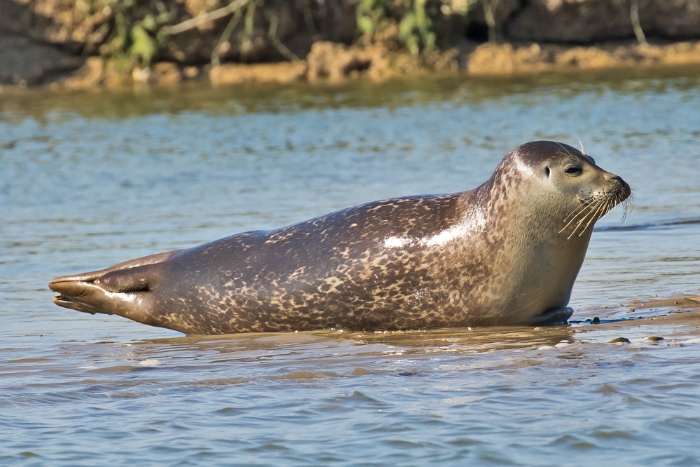
(C) Tony Morris (shared under a CC BY-NC-ND 2.0 license)
Scientific name: Phoca vitulina
Family: Phocidae
Appearance: The Common or Harbour seal displays a variety of different colour patterns ranging from brown through grey to silvery white and is covered with numerous, small spots. They have distinctive ‘V’-shaped nostrils and long whiskers and a rounded, short head. They are smaller than grey seals which are the only other species of seal to breed in the seas around Great Britain.
Size: Length 1.2 – 1.6m; weight 60 -150 kg (adults)
Natural history: Despite their name Common seals are actually less numerous and widespread than Grey seals but are often seen hauled-out with Greys on sand banks and mud flats at low tide where they can be surprisingly difficult to tell apart. Common seals are active all year round and throughout the day, they forage on their own but group together when resting at a haul-out site. They feed on fish of whatever species is abundant locally and will also take crustaceans. Mating occurs in July and females give birth to a single pup the following June. The pup is suckled for between 3 and 6 weeks after which the female will mate again. Pups are able to enter the water with their mothers only a few hours after birth.

 English (United Kingdom)
English (United Kingdom)  Czech (Čeština)
Czech (Čeština)  Nederlands (nl-NL)
Nederlands (nl-NL)  Magyar
Magyar  Deutsch (Deutschland)
Deutsch (Deutschland)  Croatian (Hrvatski)
Croatian (Hrvatski)  Polski (PL)
Polski (PL)  Español (España)
Español (España)